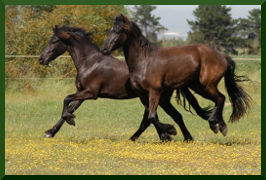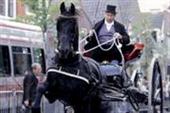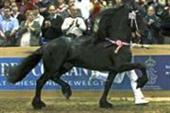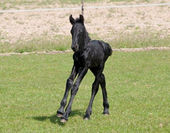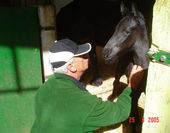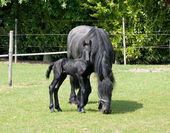Training and Stabling our Friesian Horses
Our Friesians are trained the horse-friendly way which we were taught in the Netherlands by top trainers. We also attended various clinics which gave us a sound basis and good working knowledge.
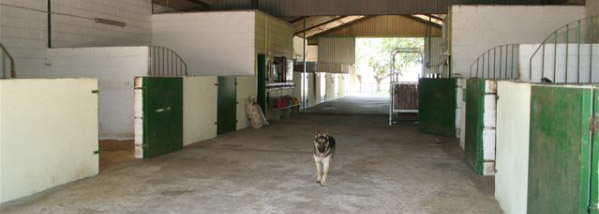
Stables
We have indoor stables, 2 houses, a wine cellar what is now our tackroom for tack/harnassement and carriages and a store for fodder. The stable has 14 spacious, airy boxes and adjacent to the stable is a wash-place with hot and cold running water.
The old farmhouse and wine cellar are dated 1927 - adjacent to the tackroom is the house we presently live in. We also have two outdoor stables and two quarantine stables.
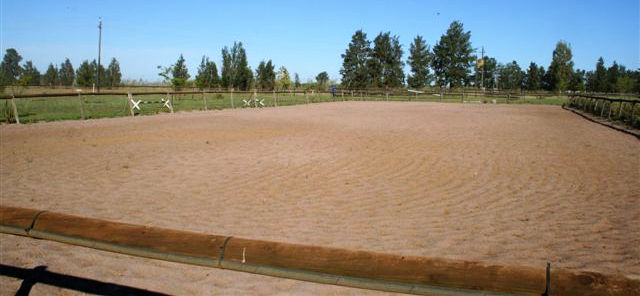
Our international standard dressage arena
We are still busy making camps for the horses - at present we have 12 camps with a total area of 15ha, all of which have electric fencing. On the other side of the road there is 16ha of grazing for the young horses.
A 2ha area is dedicated to eventing and annual inspection. The dressage arena measures 20x 60m and there is a lunging area with a diameter of 25m. Around the dressage and lunging arena there is a 250m oval-shaped arena for carriage work. In 2009 we created a driving arena of 40m x 100m for carriage driving. All arenas are under irrigation.
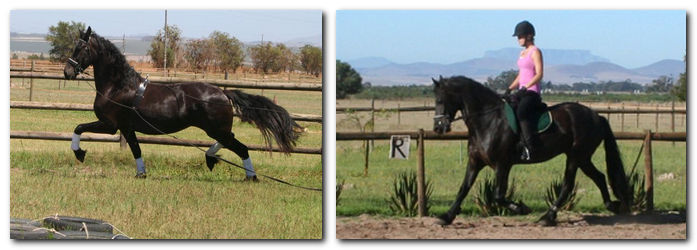
Training in progress
Breeding Friesian Horses
Importing our Friesians in 2000 was not an easy task, but even more difficult was the importation of the frozen semen we required for breeding purposes. After many administrative problems we eventually managed to import the semen of four stallions, namely Ulke 338, Tjerk 328, Onne 376 and Pike 316.
Dutch judges are in South Africa every year to inspect the new born babies and to examinate the 3 year old horses in order to have them listed in the Studbook. They will be registered and some of the very good/exellent horses wil be given a STAR, with a 1st or a 2nd premium. These are the top horses and there are only a handful of these horses in the country.
The Foalbook stallions, which are mostly imported from the Netherlands, must also have a yearly examination in order to obtain the green light for covering the Bybook mares of this country.
The Studbook mares from the Netherlands can only be inseminated with deep frozen semen of approved Studbook stallions which are in the Netherlands and USA.

